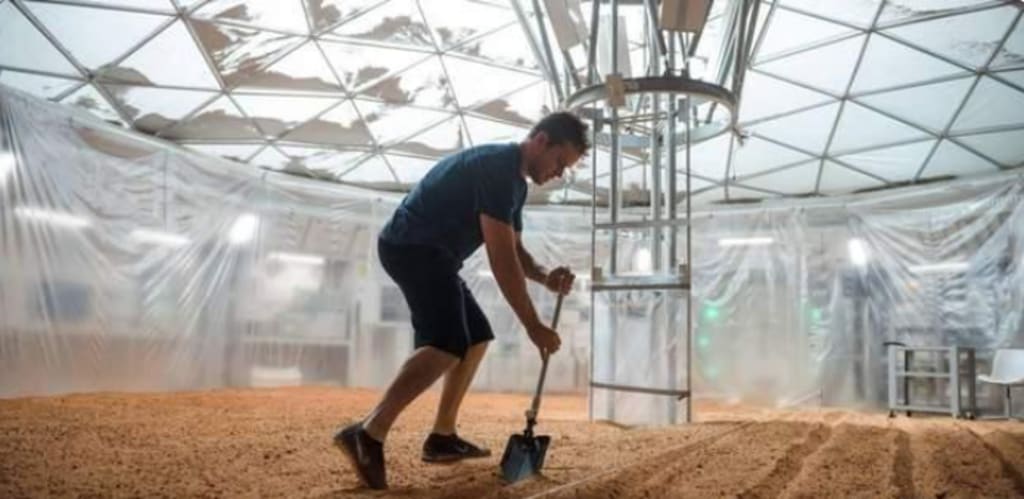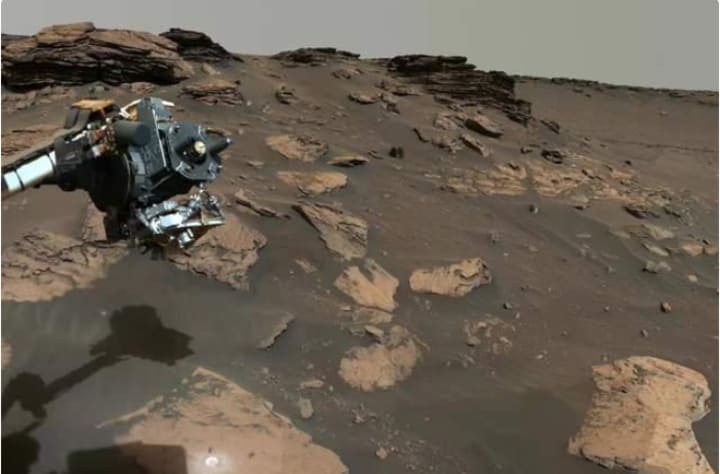Mars can grow vegetables, Trailblazer finds lots of organic matter
Trailblazer finds large amount of organic matter

Recently the news that NASA's Perseverance rover found a lot of organic matter on Mars was searched, which inevitably reminded everyone of extraterrestrial life. Some people even asked the question of the soul: Can we grow vegetables on Mars? Or can we grow vegetables with Martians? If the story in the movie "Mars Rescue" really happened, can astronauts grow potatoes directly from Martian soil?
Can you grow vegetables on Mars?
The specific news is as follows: On September 17, the Mars rover Trail located in the ancient river delta of Jazeera crater collected a piece of rock called Wildcat Ridge, on which aromatic organic molecules were found. NASA believes this is a substance or structure that could serve as evidence of past life. Of course, there is a certain probability that aromatic organic molecules can be produced naturally without the involvement of life, although this probability is very low.
The Trail has made another discovery.
NASA isn't quite sure. We won't know for sure until we next land on Mars and bring samples back to Earth. The time is almost after 2033. In any case, organic matter is the basis of what we can recognize as life, and in the meantime, we can use our imagination to the fullest. Topics such as Martians, life on Earth from Mars, etc. It's all traffic.
Perseverance drilled a hole in Mars.
When I first saw this news, Benshaw was a little surprised. Didn't humans discover organic matter on Mars a long time ago? Why are you suddenly excited now? Back in 2014, just after Curiosity landed on Mars, it drilled a hole in a rock called Cumberland and detected methane and other organic molecules in the powder samples it obtained.
Curiosity discovered organic matter on Mars back in 2014.
In 2017, Curiosity discovered borates on its way to climb Gale Crater. This substance plays an important role in the composition of RNA, stabilizing RNA ribose, and is one of the important bridges for the advancement of simple organic molecules to RNA. In particular, Curiosity discovered boron from the crater's calcium sulfate veins. NASA scientists speculate that boron may be present in Martian groundwater. If another organic matter is also present, it suggests that certain groundwater environments are suitable for biological survival. As long as the temperature is between 0 and 60 degrees Celsius and the pH is between neutral and alkaline, the simplest biochemical reactions may occur.
It seems that Mars is indeed fertile ground.
In the early hours of June 8, 2018, NASA scientists excitedly announced another important news: The Curiosity rover found tangible evidence of the presence of organic matter on the surface of Mars: By heating the analyzed material, elements such as carbon, sulfur, hydrogen, and possibly nitrogen and oxygen were found, which are essentially the composition of simple proteins and amino acids. However, some scientists believe that organic molecules contain carbon and, usually, hydrogen and that they are the chemical building blocks of life. However, their presence does not necessarily mean that there was life.
I'm not sure.
This is at least the third time that NASA has announced the discovery of organic matter on Mars, and it's "a lot". You know, because Mars has lost its magnetic protection, its surface and shallow soil are bombarded by solar wind and cosmic rays, and organic matter is difficult to preserve. Even so, both curiosity and perseverance can find large amounts of organic matter, which means that there may be more in the deeper soil. There may indeed be life, even more, complex life, in the deep soils, groundwater, and subsurface spaces of Mars.

The surface of Mars is bombarded by cosmic rays.
In addition, China's Change 5 collected samples of the moon and found "water", Zhu Rong found traces of water activity on Mars, Japan's Hayabusa II from the asteroid "Ryugu" collected a variety of amino acids, coupled with the signs found in the meteorite, maybe the universe There are seeds of life everywhere in the universe, but they just need the right soil to germinate. And some life may have already arrived. Waving their hands when they leave without taking a cloud with them, some life will blossom in the future. We are only being taken care of by the habitable zone of the solar system, a present tense. In the future, the habitable zone of the solar system will also move to other planets.
Sample of asteroid retrieved by Hayabusa II
For a long time, is it possible to grow vegetables on Mars? Whether it is aromatic organic molecules, methane, borates, or carbon, sulfur, hydrogen, nitrogen, and oxygen, they are only part of the "nutrients" for plant growth. If you can make up the nutrients, control the temperature, get enough sunlight and isolate the harmful rays, it may not be a dream to eat Martian potatoes and Martian tomatoes in a few decades.
So much trouble, it is better to directly convert carbon dioxide into starch and carbon monoxide into protein.
About the Creator
Carlo Phil
Science and art are two sides of a coin






Comments
There are no comments for this story
Be the first to respond and start the conversation.